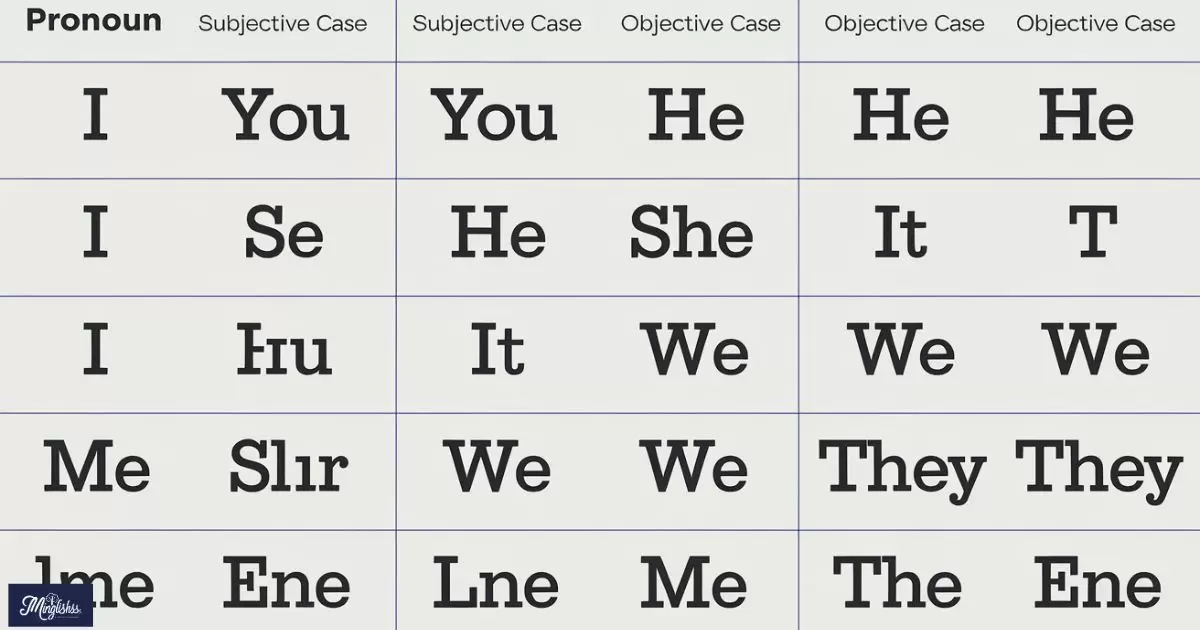Pronouns are essential building blocks in English grammar. They replace nouns in sentences, making our speech and writing more fluid and less repetitive. Understanding the different types of pronouns and their uses is key to mastering English communication.
In this guide, we will explore various pronouns, their functions, and provide examples to clarify their uses. By the end, you’ll have a comprehensive understanding of pronouns, helping you use them correctly and effectively.
Let’s delve into the different types of pronouns and discover how they enhance our language skills!
What Are Pronouns?
Pronouns are words used to replace nouns in a sentence. They help avoid repetition and make sentences more concise. Pronouns can refer to people, places, things, or ideas and are categorized based on their functions and forms.
Examples of Pronouns:
- She is going to the store.
- They are playing in the park.
- It is raining outside.
Types of Pronouns and Their Uses
1. Personal Pronouns
Personal pronouns refer to specific people or things and are used based on the role they play in a sentence: subject, object, or possessive.
- Subject Pronouns: Used as the subject of a sentence.
- Examples:
- I am reading a book.
- You are my friend.
- He is working late.
- Examples:
- Object Pronouns: Used as the object of a verb or preposition.
- Examples:
- She called me yesterday.
- They saw us at the mall.
- Can you help him with his homework?
- Examples:
- Possessive Pronouns: Show ownership or possession.
- Examples:
- This is my book.
- That car is hers.
- The house is ours.
- Examples:
Note: Personal pronouns change forms depending on their role in the sentence.
2. Reflexive Pronouns
Reflexive pronouns are used when the subject and the object of the sentence are the same. They are formed by adding -self or -selves to personal pronouns.
- Examples:
- I made the cake myself.
- She is talking to herself.
- They did it themselves.
Note: Reflexive pronouns emphasize the action done by the subject to itself.
3. Demonstrative Pronouns
Demonstrative pronouns point to specific things or people. They are used to indicate proximity or location.
- Examples:
- This is my favorite book.
- That is the car I want.
- These are the shoes I bought.
- Those are too expensive.
Note: Demonstrative pronouns are often used with the noun they refer to for clarity.
4. Interrogative Pronouns
Interrogative pronouns are used to ask questions about people or things.
- Examples:
- Who is coming to the party?
- What is your name?
- Which book did you choose?
- Whose pen is this?
Note: Interrogative pronouns help gather specific information.
5. Relative Pronouns

Relative pronouns connect clauses or phrases to nouns or pronouns. They provide additional information about a subject or object.
- Examples:
- The man who called you is here.
- The book that you lent me is great.
- She is the one whose opinion matters.
Note: Relative pronouns introduce relative clauses, providing more detail about the noun.
6. Indefinite Pronouns
Indefinite pronouns refer to non-specific people or things. They are used when the exact identity is not known or important.
- Examples:
- Anyone can join the club.
- Somebody left their umbrella here.
- Nothing is impossible.
Note: Indefinite pronouns are often used for general references and include words like everyone, nothing, and each.
7. Possessive Pronouns
Possessive pronouns indicate ownership or possession. They replace the possessive adjectives and are used alone.
- Examples:
- This book is mine.
- The car is yours.
- Is this jacket theirs?
Note: Possessive pronouns show who owns something without repeating the noun.
Cabrón: Understanding the Term and Its Usage
Examples and Usage of Pronouns
Here are some example sentences showing how different pronouns are used:
1. Personal Pronouns:
- She is going to the market. (Subject Pronoun)
- I will give her the book. (Object Pronoun)
- This is our house. (Possessive Pronoun)
2. Reflexive Pronouns:
- He cut himself while cooking.
- They enjoyed themselves at the party.
- She taught herself how to play guitar.
3. Demonstrative Pronouns:
- This is my new laptop.
- Those are the items I need.
- That looks like a great idea.
4. Interrogative Pronouns:
- Who is responsible for this task?
- What did you say?
- Which color do you prefer?
5. Relative Pronouns:
- The artist who painted this is famous.
- The house where I grew up is for sale.
- The student whose essay won the prize is in my class.
6. Indefinite Pronouns:
- Everyone enjoyed the concert.
- Nothing seems to be working today.
- Somebody needs to fix the leak.
7. Possessive Pronouns:
- This pen is mine.
- The book is yours.
- The shoes are theirs.
Answers to Key Questions
Q1: What is the difference between personal pronouns and possessive pronouns?
A1: Personal pronouns refer to specific people or things and can function as subjects or objects in sentences. Possessive pronouns indicate ownership or possession and replace possessive adjectives.
Q2: Can you use reflexive pronouns in every sentence?
A2: Reflexive pronouns are used when the subject and object of the sentence are the same or for emphasis. They are not used in every sentence but are essential for certain contexts.
Q3: How do demonstrative pronouns differ from relative pronouns?
A3: Demonstrative pronouns point to specific things or people (e.g., this, those), while relative pronouns connect clauses to nouns or pronouns (e.g., who, which).
Q4: When should I use interrogative pronouns?
A4: Use interrogative pronouns to ask questions about people or things, such as who for people and what for things.
Q5: What are some examples of indefinite pronouns?
A5: Examples of indefinite pronouns include anyone, somebody, nothing, and each. They refer to non-specific people or things.
Conclusion
Understanding pronouns and their various types is essential for clear and effective communication in English. By mastering personal, reflexive, demonstrative, interrogative, relative, indefinite, and possessive pronouns, you can enhance your language skills and avoid repetitive language.
With practice and these guidelines, you’ll be able to use pronouns confidently and accurately. Keep referring to this comprehensive list and examples to solidify your knowledge. Happy learning!

Hi, I’m Zadie Smith: I’m dedicated to helping others master English through practical tips. I enjoy making complex ideas simple and accessible for everyone.










